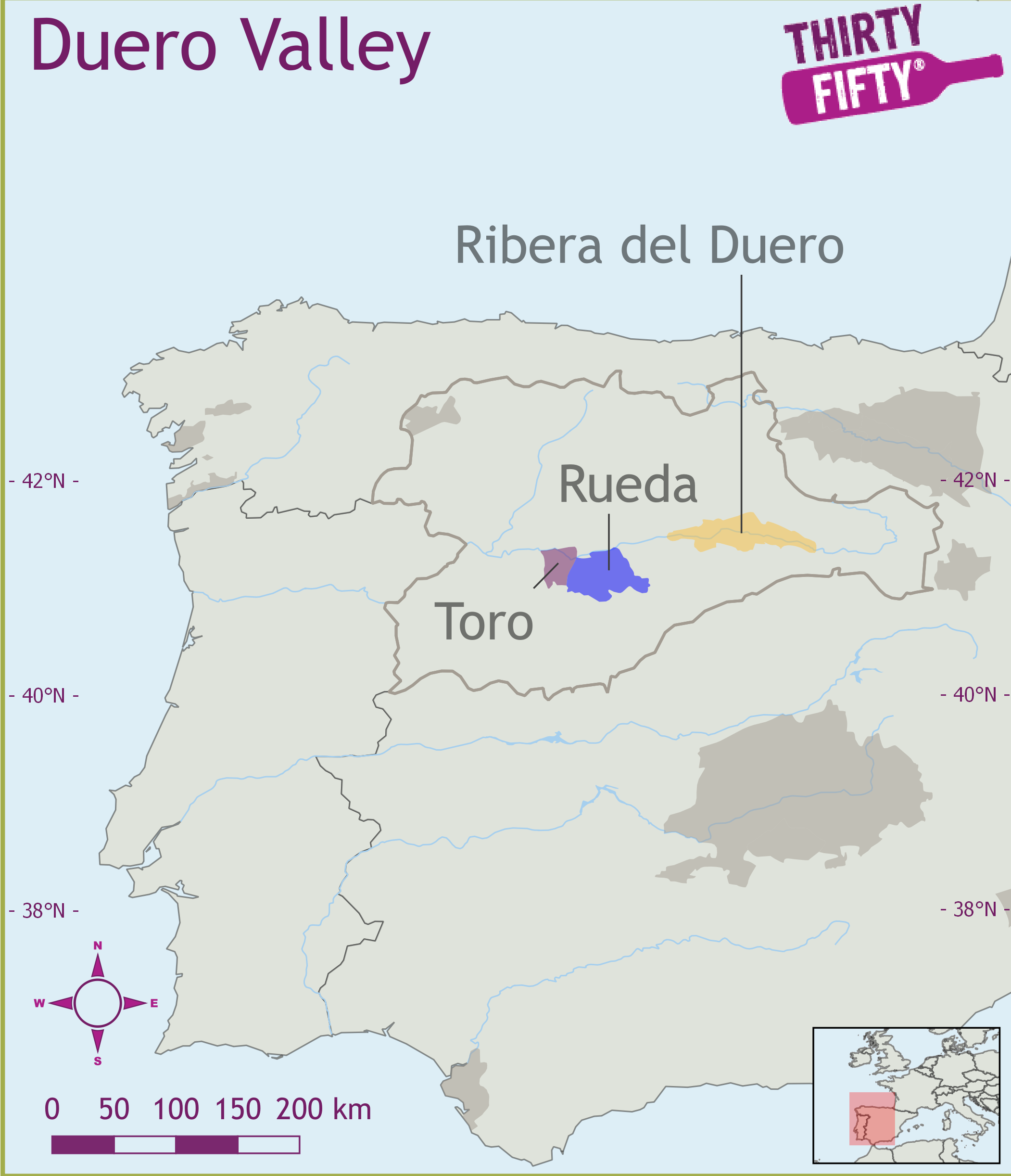Duero Valley's Grapes: Sauvignon Blanc, Tempranillo, Verdejo
Sauvignon Blanc
Grassy and herbaceous, with the characteristics of gooseberries, nettles and cat�s pee � this can only be referring to one grape variety: Sauvignon Blanc. The grape has its origins in Bordeaux but is now widely cultivated over France and around much of the world. Think of Pouilly-Fume and Sancerre from the Loire � both these wines are made from Sauvignon Blanc and are, probably, the grape in its purest form: crisp, dry, aromatic and unoaked. In Bordeaux, it�s blended, particularly with Semillon, for the dry whites there, but it�s also an ingredient for the region�s luscious dessert wines, such as those of Sauternes and Barsac. On the other side of the world, however, New Zealand has also virtually made this white variety its own, giving the wine a screwcap along the way. Yet this fashionable grape does have its faults. For one, unblended, it doesn�t age. Wines made from Sauvignon Blanc are generally meant to be drunk young, but then that can also be a bonus � as soon as you�ve bought a bottle, you can just chill this zesty little number and enjoy it! On the growing front, it�s susceptible to botrytis, oidium and black rot and will also rot if grown on fertile soils, preferring gravelly or sandy loams, or chalk in parts of the Loire. It also tends to be very vigorous and if it�s allowed to become over-productive on heavy soils, then the characteristics of the wines will be much diluted. Sauvignon Blanc goes by a few other names, the most common probably being Fume Blanc, as it�s known in California.
Tempranillo
Tempranillo is Spain�s answer to Cabernet Sauvignon and one of the most important black grapes used for making Rioja. It takes its name from temprano, Spanish for �early�, because it usually ripens early � and certainly a good two weeks before Rioja�s other important grape Garnacha. This relatively short growing cycle makes Tempranillo able to thrive in the often harsh climate of Rioja�s higher, more Atlantic-influenced zones Rioja Alta and Rioja Altavesa. Although it produces deep-coloured wines, it doesn�t have a particularly strong flavour identity and is quite low in acidity so, alone, the wines lose their fruit and liveliness after a few years. This is the reason a high proportion is blended with juicier, more perfumed varieties (which in Rioja are Garnacha, Mazuelo, Graciano and Viura) to produce wonderful wines capable of ageing. It prefers deep calcareous or sandy clay soil and does best on slopes. In Spain, it�s known by many synonyms, including Tinto Fino, Tinto de Toro and Cencibel, although recent research by winemakers now suggests its namesakes are in fact different clones. Elsewhere, it�s grown in Portugal�s Alentejo as Aragonez and in the Douro as Tinta Roriz, as well as in Argentina and southern France.
Verdejo
Verdejo is the character full nutty grape grown in Spain's Rueda region. Historically it had oxidised very quickly losing any fruit character. As a result it was used to produce sherry like wines. However in the 1970's modern wine making techniques such as night time harvesting coating the wines in an inert gas to keep oxygen away, and cool fermentation has managed to control the oxidation process, allowing still light wines to be created.
PDO's & PGI's
- DO Ribera del Duero
- DO Rueda
- DO Toro
Duero Valley
Key Grape Varieties: Sauvignon Blanc, Tempranillo, Verdejo


